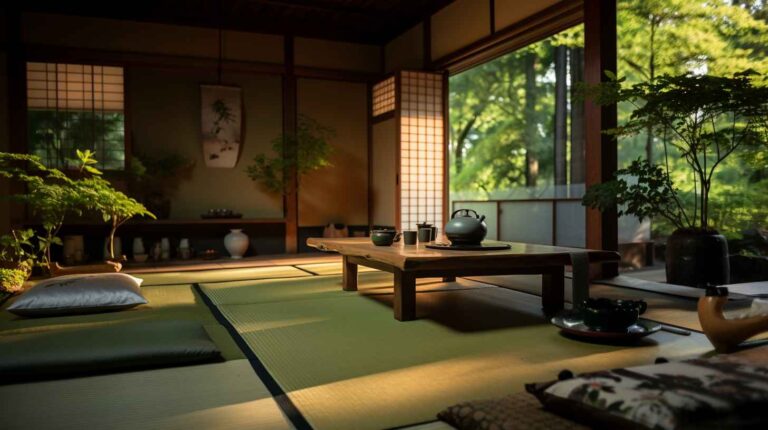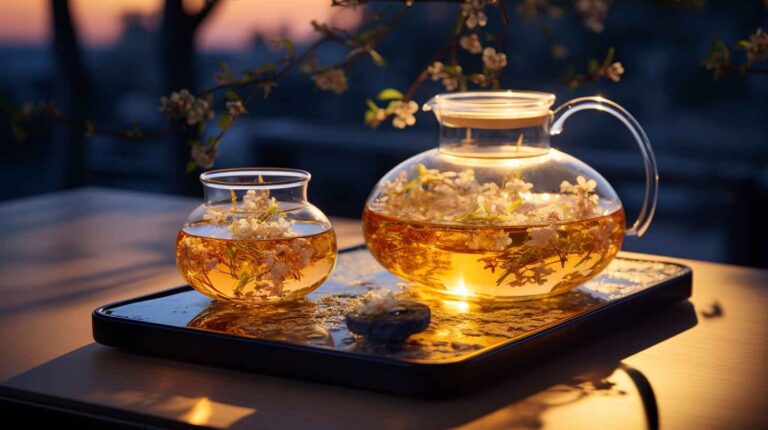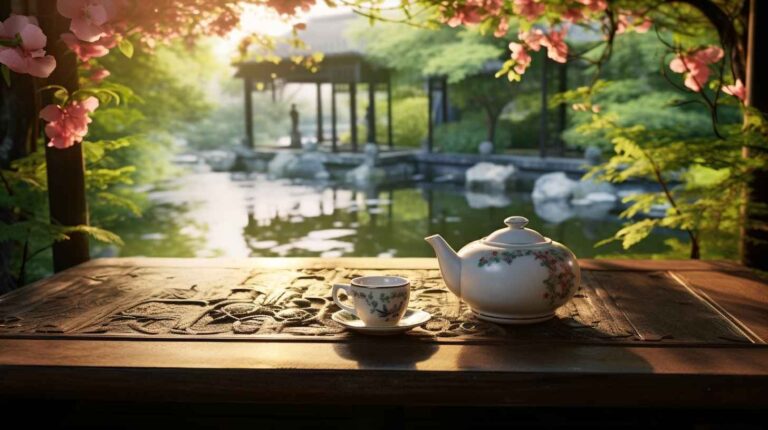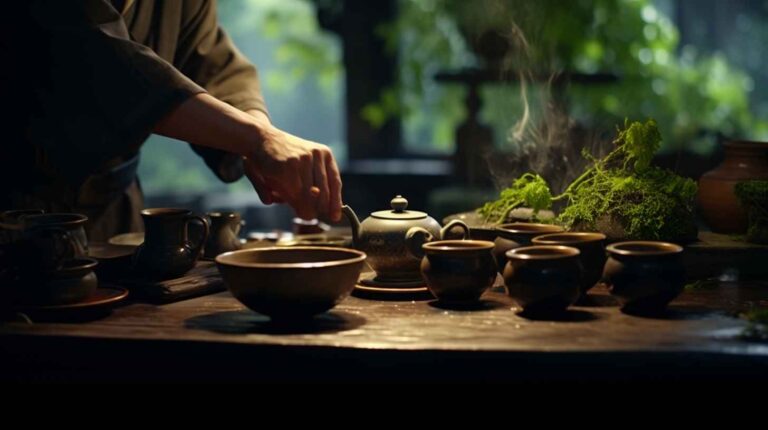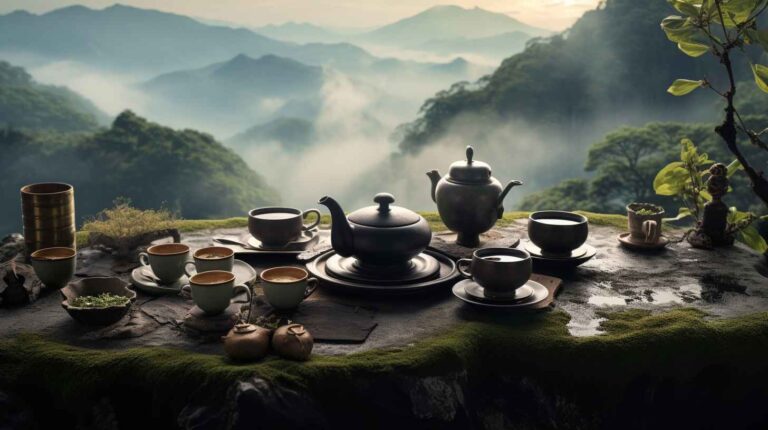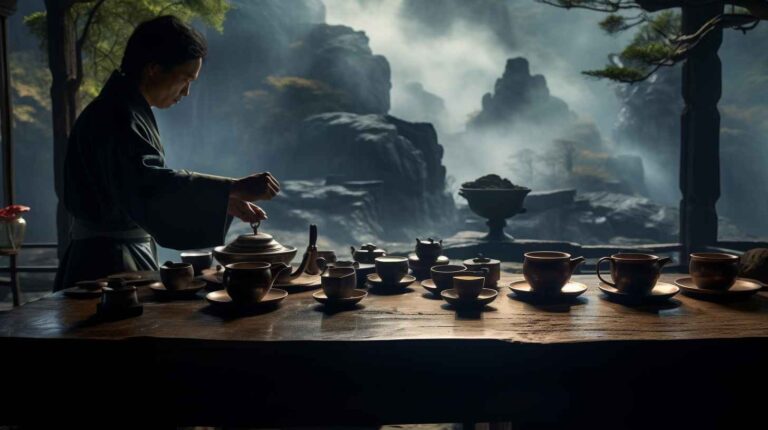From Gongfu to Western Style: A Comparative Brewing Guide
Introduction
The world of tea is as vast as the horizon, presenting a canvas painted with colors of diverse flavors, varieties, and brewing traditions. Tea, for many, is not just a beverage; it’s an art, a ritual, a moment of relaxation, or a chance for social interaction. While every culture has contributed to the rich tapestry of tea ceremonies and rituals, the Gongfu and Western-style brewing methods prominently stand out. These two styles, each emanating from its unique cultural and historical roots, offer distinct experiences to tea lovers. This article aims to navigate you through the subtle alleys and broad avenues of these methods, illuminating their tools, techniques, and the sensory journeys they embark upon.
Gongfu Cha: The Artful Chinese Tea Ceremony
1. Philosophy and History
At the heart of Gongfu Cha is the belief that brewing tea is not a mundane task, but an art that requires dedication, focus, and, as the name suggests, “effort”. Gongfu Cha can be understood as “making tea with skill”. This traditional Chinese method, which traces its origins to the serene landscapes of the Fujian and Guangdong provinces, gradually spread its wings and flew across the country, nestling into the daily lives and special occasions of countless individuals. More than just a method of brewing tea, Gongfu Cha evolved into a mode of communication, a medium for social interaction, and a platform for strengthening bonds.
Over time, Gongfu Cha has seen several transformations, incorporating influences from different dynasties and regions, but its essence remains consistent: a deep reverence for the art of tea.
2. Tools of the Trade
- Teapot/Yixing Clay Pot: These aren’t mere pots; they’re reservoirs of flavor. Crafted from the unique Yixing clay found along the banks of the Yangtze River, they’re celebrated for their porous texture. With every brew, these pots absorb the tea’s essence, ensuring that every subsequent brew is richer and more flavorful. An ardent tea lover often has multiple Yixing pots, each dedicated to a specific tea type, allowing the pot to mature beautifully over time.
- Gaiwan: This versatile lidded bowl is central to the Gongfu ceremony. Whether you’re using it to brew the tea or savor it, its design, often adorned with intricate patterns, embodies Chinese aesthetics and functionality.
- Tea Tray: Beyond its apparent utility of holding the teaware, the tea tray, with its built-in drainage, ensures that the ritual remains mess-free. Crafted from bamboo, wood, or stone, it captures the spillage, allowing the ceremony to flow seamlessly.
- Tea Pets: These whimsical clay figurines, ranging from mythical creatures to everyday animals, are more than decorative items. They’re companions in the tea ceremony, ‘fed’ by pouring tea over them, symbolizing good luck and prosperity.
- Cha Hai (Fair Cup): Ensuring every guest gets an evenly brewed cup of tea is paramount in Gongfu Cha. The Cha Hai, or the ‘fairness cup’, serves this purpose, harmonizing the brew’s strength before it’s poured into individual cups.
3. Brewing Technique
The heart and soul of Gongfu Cha lie in its meticulous brewing process. This technique revolves around celebrating the tea leaf’s journey, from its raw form to a fragrant brew, by extracting its flavors layer by layer.
The ritual starts with a ceremonial cleaning, where the teaware is warmed, awakening its spirit. The tea leaves, carefully measured, grace the pot or Gaiwan, awaiting their transformation. The first contact with hot water isn’t to brew but to rinse the leaves, cleansing them and priming them for the infusion. This initial rinse, though brief, awakens the dormant flavors. The first brew, short and intense, sets the stage. With each subsequent infusion, the steeping time is extended slightly, unraveling a new facet of the tea’s flavor profile, like a story unfolding chapter by chapter.
By tuning into each infusion, one can journey through the tea’s lifecycle, from its youthful zest to its mature depth, culminating in a gentle fade, reminiscent of a beautiful sunset.
Western Style Brewing: Simplicity Meets Elegance
1. Philosophy and History
While the East intricately weaves art into tea brewing, the West approaches it with a lens of functionality blended with elegance. Western-style brewing is a testament to the region’s knack for simplifying processes without compromising on the essence. Rooted in the European and North American landscapes, this method echoes the lifestyle of its origin: straightforward yet profound. The West’s tryst with tea might be younger compared to the ancient Chinese traditions, but its embrace has been warm, evolving the ritual to suit its ethos.
Tea in the West rapidly moved from a luxury commodity to an everyday beverage, enjoyed not just by the elite but by people from all walks of life. This democratization of tea is reflected in the Western brewing style, focusing on ease, consistency, and volume.
2. Tools of the Trade
- Teapot: Western teapots, often large and elegantly designed, are a blend of aesthetics and function. Crafted from materials like ceramic, porcelain, or glass, they’re built to hold a generous quantity of tea, catering to the Western preference for larger servings.
- Tea Infuser: A practical tool, the tea infuser ensures that the tea leaves have ample space to expand while steeping, maximizing flavor extraction. Whether made of metal or silicone, its design ensures that the leaves don’t escape into the brew, offering a clear, leaf-free cup of tea.
- Teacups: In stark contrast to the petite Chinese cups, Western teacups are more substantial, reflecting the preference for a more extended tea session, often accompanied by snacks or a meal.
3. Brewing Technique
Western brewing is all about achieving a balanced and consistent flavor. The process, devoid of multiple infusions, aims to extract the tea’s essence in one go. The ritual begins by warming the teapot, ensuring the tea maintains its temperature throughout the brewing process. Following the general guideline of one teaspoon of tea per cup, the leaves are introduced to the pot. Boiling water, adjusted to the tea type, is then poured, setting the stage for the infusion. The steeping time, ranging from 3 to 5 minutes, is crucial in determining the brew’s strength. Once the desired flavor is achieved, the tea is poured into large cups, ready to be savored.
Comparing the Experiences
The nuanced differences between Gongfu and Western brewing aren’t just in their techniques but also in the experiences they curate.
Flavor Profile: Gongfu, with its multiple infusions, offers a symphony of flavors. Each infusion is like a musical note, starting soft, building to a crescendo, and then gently fading, providing a holistic experience of the tea’s character. In contrast, Western brewing is like a single, prolonged note, consistent and deep, aiming to capture the tea’s essence in one go.
Quantity vs. Quality: The Western approach leans towards volume, producing a potful of tea, ideal for sharing or leisurely sipping. Gongfu, with its emphasis on short, intense infusions, is more about savoring the quality and nuances of every drop.
Cultural Significance: Gongfu is a dance of the senses, a meditative ritual that underscores mindfulness, and a celebration of the tea’s journey. It’s a social event, fostering connections and conversations. Western brewing, on the other hand, is a reflection of the region’s pace of life. It’s about simplicity, efficiency, and the joy of a comforting drink, whether savored in solitude or in company.
Conclusion: Finding Your Preferred Brew
The world of tea, with its myriad methods, beckons enthusiasts to explore its depths. Whether you’re entranced by the artistry of Gongfu or drawn to the straightforward charm of Western brewing, there’s no right or wrong choice. It’s all about the experience you seek.
As you embark on your tea journey, remember that every method, every ritual, every sip tells a story. The key is to find the narrative that resonates with you, allowing you to immerse in the world of tea fully. So, set forth, explore, experiment, and let the tea leaves guide you to your perfect brew.

